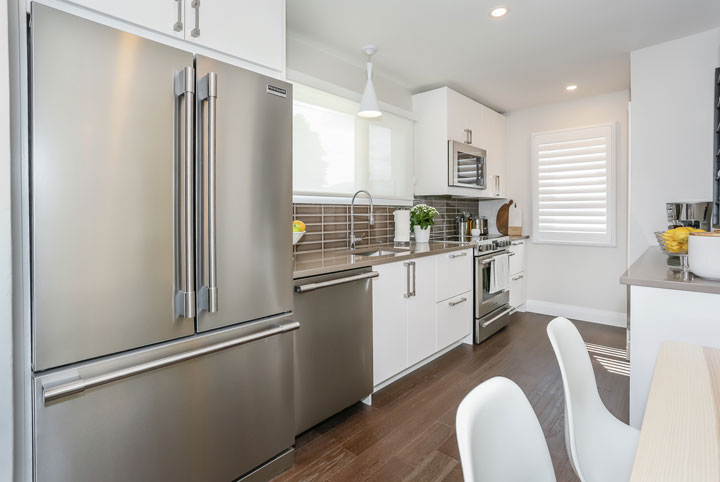
You asked, and Scott McGillivray’s answered! Read on for our “Ask Scott” series, where the income property professional weighs in on your most pressing real estate related questions.
HGTV Canada Instagram fan Jolyne asks: My husband and I are flipping our first house. What are the things that add value that we should spend a little extra on?
When it comes to a flip you want to do the bare minimum for the most profit. And when I say ‘bare minimum’ I mean in terms of the amount of work and number of projects – not the quality of the renovation. Here are a few tips.
Cost Considerations
Before you fully plan out where you’re going to spend your money, you’ll need to consider a couple of things.
Neighbourhood – Before you decide what to spend money on, it’s important to be familiar with the calibre of other homes in the area. In a high-end community there will be certain expectations when it comes to the materials used that won’t necessarily apply to a flip in a lower income community. So take the rest of the neighbourhood into account when allocating budget items.
Structural Issues – These are paramount, and you’ll have to spend what you’ll have to spend. Hopefully you got a good home inspection so you know what to expect. These fixes won’t add value per se, but they need to be done.
Where to Add Value
The majority of money you’ll make on a flip is through the labour you can save by doing some of the work yourself (providing you do it correctly), and the cosmetic upgrades that people will see. Here are a few of my favourite suggestions.
Curb Appeal – The exterior of the house is the first thing people are going to see, so don’t forget to allocate some of your budget to the exterior. I recommend upgrading the hardware (house numbers, door locks, etc.), securing (or replacing) railings, and replacing the front door if necessary. New steel and fibreglass front doors are very high sources of return on investment, so it’s usually worth the expense. Also, think about planting some flowers or new shrubs, but don’t get into any complicated landscaping. While it may look nice, it can turn some people off because all they can see is the amount of work it will take to maintain.
Flooring – Hardwood flooring is the most desirable type of flooring in homes across North America, but it doesn’t come cheap. If you can make it work within the budget then great, but if not, a laminate or luxury vinyl can be a great alternative. Don’t do carpet. If you want to add some softness you can stage the home with area rugs. Just remember not to put hardwood in the basement. Due to the moisture issue you’ll want to lay a Drybarrier subfloor, and then a layer of laminate or vinyl.

Kitchens – Kitchens are always the most important room in the house when it comes to adding value. You want quality cabinets, nice flooring, and clean, functional appliances. While stainless steel isn’t a must, I would recommend you spend a little bit extra for it because they always look clean and new, and it’s what most buyers are looking for. Also, if you’re looking to add something special you might want to think about a Quartz countertop. Quartz isn’t exactly inexpensive, but it’s becoming increasingly popular because it looks fantastic and it’s incredibly durable. It won’t get you a great return in lower income areas, but as the houses get more expensive, materials like Quartz become more desirable.
Bathrooms – I’m a big fan of frameless glass shower enclosures where possible. It’s by no means a deal breaker, but they make bathrooms look a lot bigger, which is always nice. Also, make sure to get a decent vanity with storage. Pedestal sinks are nice for powder rooms, but they’re not very functional for main bathrooms. You can get great vanities at big box stores which will improve the look and the functionality of the space without blowing your budget. Also, if you’re already replacing the floor and you live in a chilly climate, an electric floor warming system is worth your consideration.
Don’t Over Invest
If there’s one word of caution I can give you, it’s to not over invest. It’s a real problem with first time flippers because they get so excited. They want to take on every project they possibly can, and essentially turn it into their dream home. Remember, it’s not your dream home. Every time you spend more than you have to you eat into your profit. So keep your standards high when it comes to quality, but leave the new owners a little room to put their own stamp on things.
Images courtesy of McGillivray Entertainment
HGTV your inbox.
By clicking "SIGN UP” you agree to receive emails from HGTV and accept Corus' Terms of Use and Corus' Privacy Policy.



